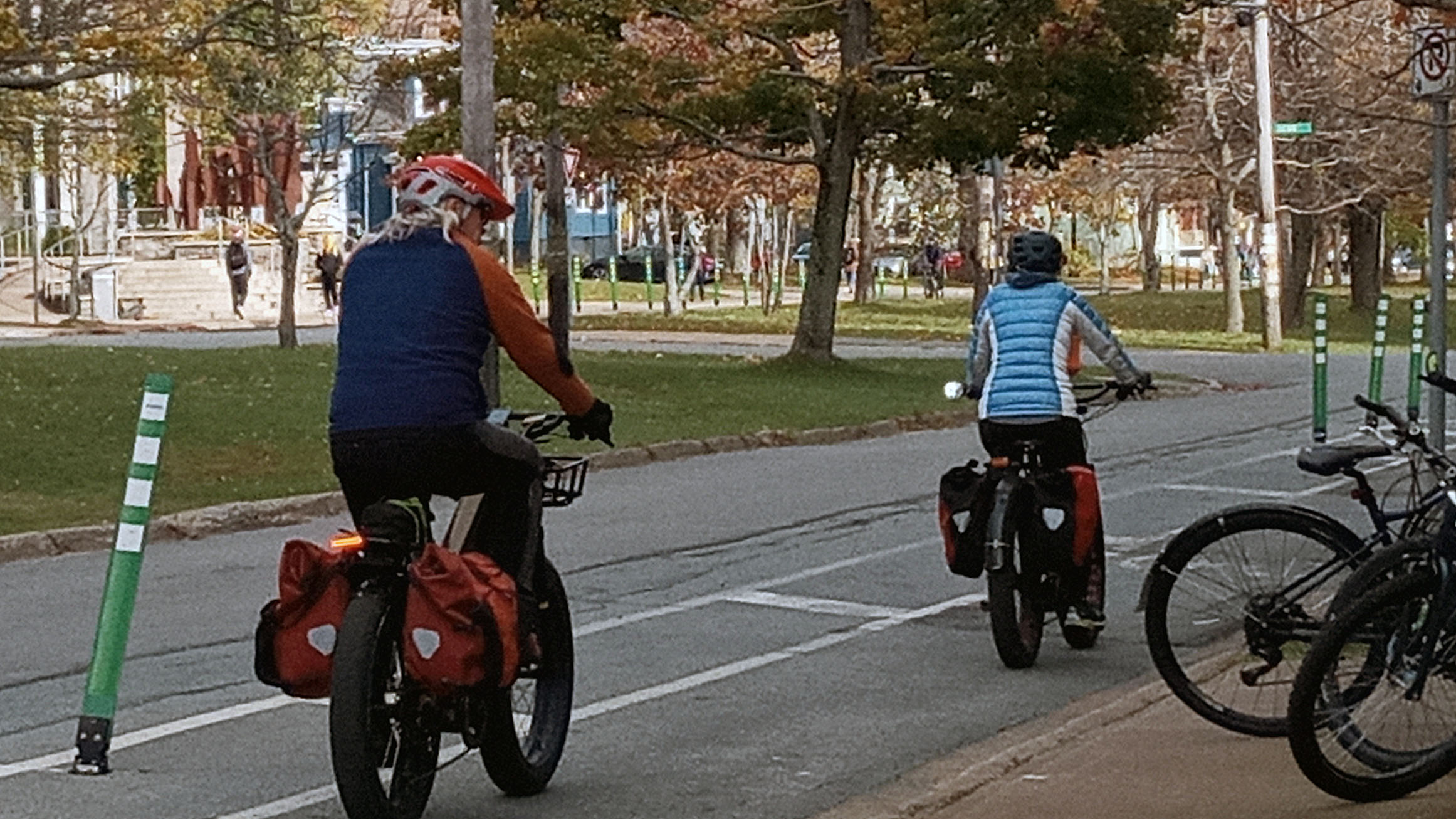Why the Halifax bike lane network is delayed
HRM predicts 70% of the network will be done by 2024

caption
Two cyclists ride down University Avenue using the interim bike lane.A network of bicycle lanes across the Halifax peninsula is only 40 per cent complete and will not be finished until 2024 or later.
In 2017, Halifax regional council approved the Integrated Mobility Plan, which prioritizes active transportation and accessibility over the use of motor vehicles. The plan included the All Ages and Abilities Bikeway Network, scheduled to be completed in 2022.

caption
A map of the proposed AAA which was included in the initial IMP.Only 40 per cent was done as of June, the Integrated Mobility Plan quarterly update shows.
The network is expected to be 70 per cent done by the end of 2024, according to a spokesperson for the Halifax Regional Municipality. Klara Needler cites numerous reasons for the delay.
“Causes of delays include land acquisition, building construction encroachments, project complexity and dependencies on other capital projects,” Needler said in an email.
Needler said some elements, such as the Africville Active Transportation connections, may take longer because of a “broad range” of factors. Construction for this project is estimated to be completed in 2025, according to the project website.
The delays don’t surprise Anika Riopel, with the Ecology Action Centre’s transportation team.
“I think it’s pretty typical that things like these projects are often behind or delayed, and specifically in context with the pandemic and all of the labour shortages like that,” Riopel said.
Riopel is looking forward to seeing the network completed.
“I’m really excited to see what the uptake of riding will be when we actually have that completed and connected network which we currently don’t have,” she said.
Jillian Banfield is less optimistic about the future of the bike lane network. Banfield was named Halifax’s Bike Mayor by Dutch organization BYCS and uses cycling as her main mode of transportation. She isn’t pleased with the delays with the network.
“My main thought is that it’s disappointing,” Banfield said. “It’s a minimum grid itself. It was not really a comprehensive network of what we needed.”
A minimum grid network is a series of intersecting bike lanes connecting important streets in a city to allow cyclists to get from one place to another safely. As Halifax’s network is only 40 per cent complete, it is not yet a minimum grid.

caption
HRM’s map of the current status of the AAA, including elements that have not yet been installed.
Ben Hammer, another member of the Ecology Action Centre’s transportation team, said connectivity is a key issue when it comes to bike lanes.
“A bike lane isn’t useful if it only goes sporadically for a block or two here and there. Riders feel unsafe and vulnerable in blocks in between protected infrastructure,” Hammer said.
At the moment, several sections of the bike lane network end abruptly or are unconnected. A notable example is the interim protected bike lane on University Avenue. The lane ends suddenly several hundred feet before the Robie Street intersection, putting cyclists in the road for the two blocks before University Avenue intersects with the South Park Street protected bike lane.
It’s unclear when University Avenue will be a fully protected bike lane.
“People who are criticizing the network and trail that currently exists because they don’t quote/unquote see people on them are also missing that piece, that it’s not finished yet,” Riopel said.
On the peninsula, the next projects set to be completed include the Almon Street and Brunswick Street bike lanes.
About the author

Hannah Marais
Hannah Marais is a fourth-year journalism student and a reporter for the Signal. When she's not out reporting, she's probably cycling, thinking...
